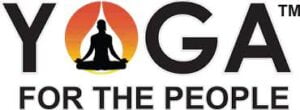A popular style of yoga class, Bikram yoga is essentially a regular yoga workout in a hot temperature and sometimes humid room.
Somehow after enough yoga, sitting perfectly erect and also appearing at ease become no longer mutually exclusive. That’s how instructors Elizabeth Glover and Lara Atella sat in the foyer of their studio on H Street in Washington, D.C. this week. where they explained to me the draw of very hot yoga, as a group of soaking wet, barely clad people poured out of their 105-degree Fahrenheit noon Bikram class. Posture is contagious, like yawning or hepatitis, but with your spine.
Bikram yoga, by definition and decree of the guru, consists of 90 minutes at 105 degrees Fahrenheit and 40 percent humidity. The series follows a specific set of poses in a rigid order every time. “Hot yoga” on the other hand, is usually shorter and not so hot, and can be an amalgamation of poses.
Even though the practice has been around since the 1970s, breaking into the mainstream American consciousness, when his friend Shirley MacLaine got Choudhury a spot on Johnny Carson. it has largely gone uninvestigated. But as its popularity continues to grow, along with the growing popularity of hot workouts of other types. there are now hot spinning classes, hot kettle-bell classes. hot boot camps the cumulative hotness that drew the attention of ACE.
Here is a heat index for six of the most popular hot styles.
The most well-known kind of hot yoga is Bikram, the original hot yoga class. in which the studios are heated to 105 degrees F with 40% humidity.
Created by Bikram Choudhury in the 1970s, Bikram yoga is a 90-minute class that goes through a 26-pose series. always in the same order. The specific workout is often imitated. Classes that use Bikram’s sequence will also turn up the heat to around 105 degrees F.
Baptiste Power Vinyasa
Headquartered in Boston with affiliated studios in more than 20 other U.S. states. Baptiste Power Vinyasa studios teach hot flow yoga in the style of Baron Baptiste. Studios are heated to about 95 degrees F to facilitate stretching.
CorePower Yoga

The popular CorePower Yoga studio chain has a lot of different classes on its menu, each with its own preferred temperature. The CorePower Yoga 2 (C2) class, an all-level hot flow class, is taught in a room maintained between 93 and 98 degrees F. Its Hot Yoga class involves 26 poses in a 105-degree F Temperature room, similar to Bikram yoga.
Evolution Yoga
This rapidly expanding style, co-founded by former senior Bikram instructor Mark Drost. boasts studios in the United States, South America, and Australia, with additional affiliates in Europe and Asia. Evolution teaches Bikram’s sequence under the moniker Primary Bikram yoga Series at Temperature 105 degrees F. Their other offerings range in temperature from 75 to 90 degrees F.
Moksha or Modo Yoga
This Canadian-based yoga franchise of Moksha Yoga called Modo Yoga in the United States. keeps its “green” classrooms at Temperature 103 degrees F. The Moksha sequence is always the same 40 poses and takes about 90 minutes. Students who are short on time can take a condensed 60- or 75-minute version of the sequence, while those who like vinyasa can try the flow version.
Yoga to the People

This rapidly expanding chain of donation studios with locations on the east and west coasts, settled a Bikram copyright infringement suit out of court, agreeing to stop teaching Bikram’s series. Yoga to the People studios now offers Traditional Bikram Yoga classes with Temperature 105 to 108 degrees.
Bikram yoga may increase your core body temperature and could lead to dehydration or heat exhaustion



